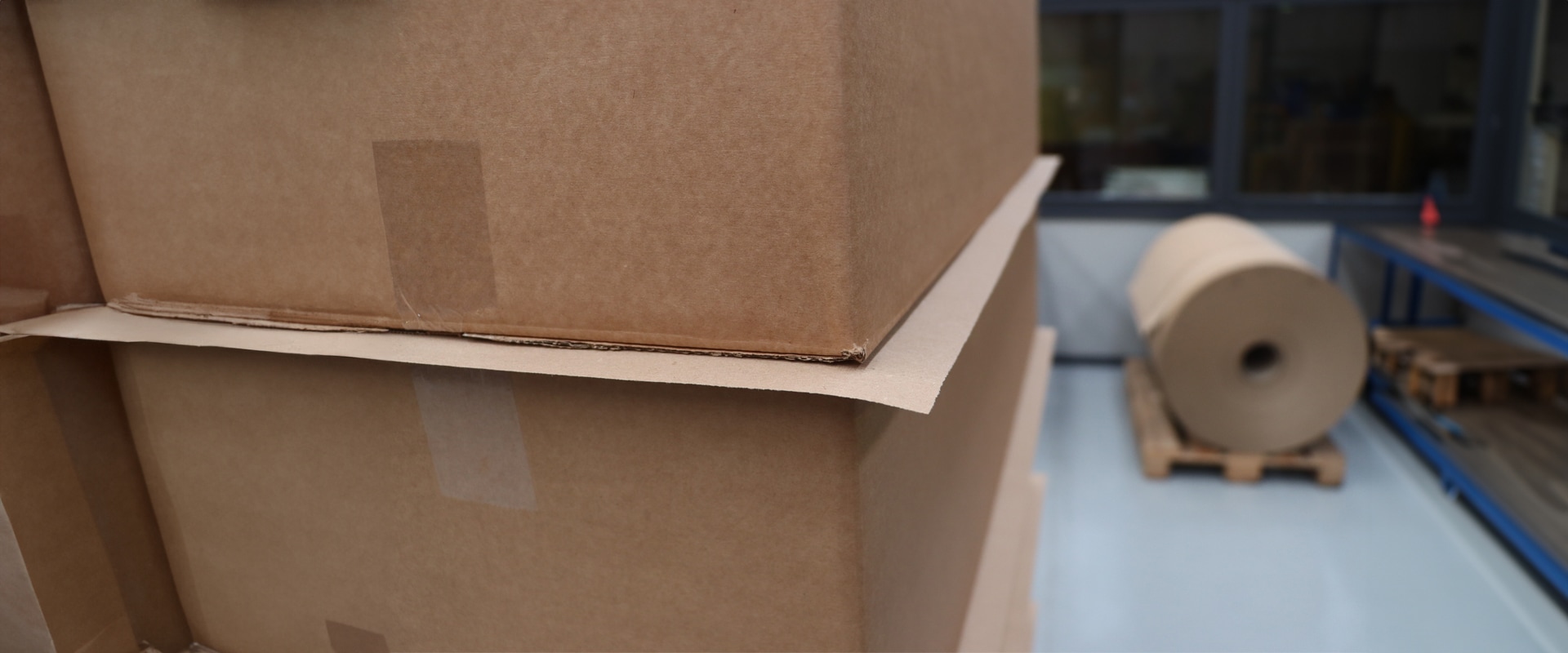
Mastering pallet stacking: Best practices and the role of anti-slip paper
Date
March 21, 2024
Subject
Pallet stacking
In warehouse management, the art of pallet stacking is both a science and an art. Whether you're a seasoned professional or just starting out, understanding the best practices for stacking items on a pallet is crucial. In this blog post, we'll explore the fundamentals of pallet stacking, including block stacking, column stacking, and interlocked stacking, while highlighting the indispensable role of anti-slip paper in ensuring stability and safety.
The foundation of pallet stacking: Best practices

Before delving into the intricacies of different stacking methods, let’s establish some fundamental best practices for pallet stacking:
– Uniformity is key: Ensure that items being stacked on a pallet are uniform in size, weight, and shape. This promotes stability and prevents shifting during transport or storage.
– Mind the weight: Distribute weight evenly across the pallet to prevent overloading and instability. Heavier items should be placed on the bottom layers, while lighter items can be stacked on top.
– Quality pallets matter: Use sturdy and undamaged pallets that are appropriate for the weight and dimensions of the load. Inspect pallets regularly for signs of wear and tear.
– Secure the load: Use appropriate packaging, such as shrink wrap or strapping, to secure the load and prevent shifting. This is especially important for fragile or irregularly shaped items.
– Consider fragility: Take into account the fragility of items being stacked and use padding or dividers as needed to prevent damage during handling.
Understanding stacking methods: Block, column, and interlocked stacking
Now that we’ve covered the best practices, let’s explore the different stacking methods commonly used in palletisation.
What is block stacking?
Block stacking is a simple and versatile storage technique where unit loads are stacked directly on the warehouse floor without the use of racks. It’s appropriate for palletisation when:
– Products are sturdy and can withstand the pressure of being stacked without racks.
– Space is limited, and traditional racking systems are not feasible or cost-effective.
– Items are uniform in size and weight, facilitating stable stacking directly on the floor.
How to do column stacking with anti-slip paper?
Column stacking involves arranging items in a uniform pattern on the pallet. To enhance stability and prevent shifting, anti-slip paper is strategically placed between layers of stacked items. This method is ideal for:
– Products in sturdy boxes or containers.
– Cases where a uniform stacking pattern maximizes stability.
– Ensuring that items remain securely in place during transport or storage.
How to do interlocked stacking with anti-slip paper?
Interlocked stacking alternates the stacking pattern for each layer, creating a more intertwined structure. Anti-slip paper is used to mitigate the risk of pressure points and ensure even weight distribution between layers. This method is suitable for:
– Maximizing stability and load-bearing capacity.
– Preventing shifting and damage to items in the lower layers.
– Achieving a secure and stable pallet configuration for fragile or irregularly shaped items.
The role of anti-slip paper in palletisation
Anti-slip paper emerges as a game-changer in the realm of pallet stacking. With its friction-enhancing properties, anti-slip paper provides a secure barrier between layers of stacked items, preventing slippage and ensuring stability. Here’s why it should be a part of your best practice for palletisation:
– Enhanced stability: By preventing slippage and shifting, anti-slip paper enhances the stability of palletised loads, reducing the risk of damage and maximising space utilisation.
– Versatile application: Anti-slip paper can be used in conjunction with any stacking method, whether it’s block stacking, column stacking, or interlocked stacking. Its versatility makes it a valuable addition to any palletisation process.
– Cost-effective solution: Investing in anti-slip paper is a cost-effective way to improve pallet stability and protect valuable inventory. Its affordable price point makes it accessible to warehouses of all sizes.
Get 6 great reasons to use anti-slip paper as interlayer sheets in your palletisation here
In conclusion, the way you stack your pallets can make all the difference. By mastering the best practices for palletisation and leveraging innovative solutions like anti-slip paper, you can enhance stability, protect your inventory, and streamline your operations.
At Palcut, we’re passionate about helping businesses optimise their palletisation processes. Whether you’re struggling with column stacking, interlocked stacking, or any other palletisation challenge, we’re here to help. Our anti-slip paper solutions are designed to meet the diverse needs of warehouses and distribution centers, providing reliable stability and peace of mind.
Ready to take your palletisation to the next level?









